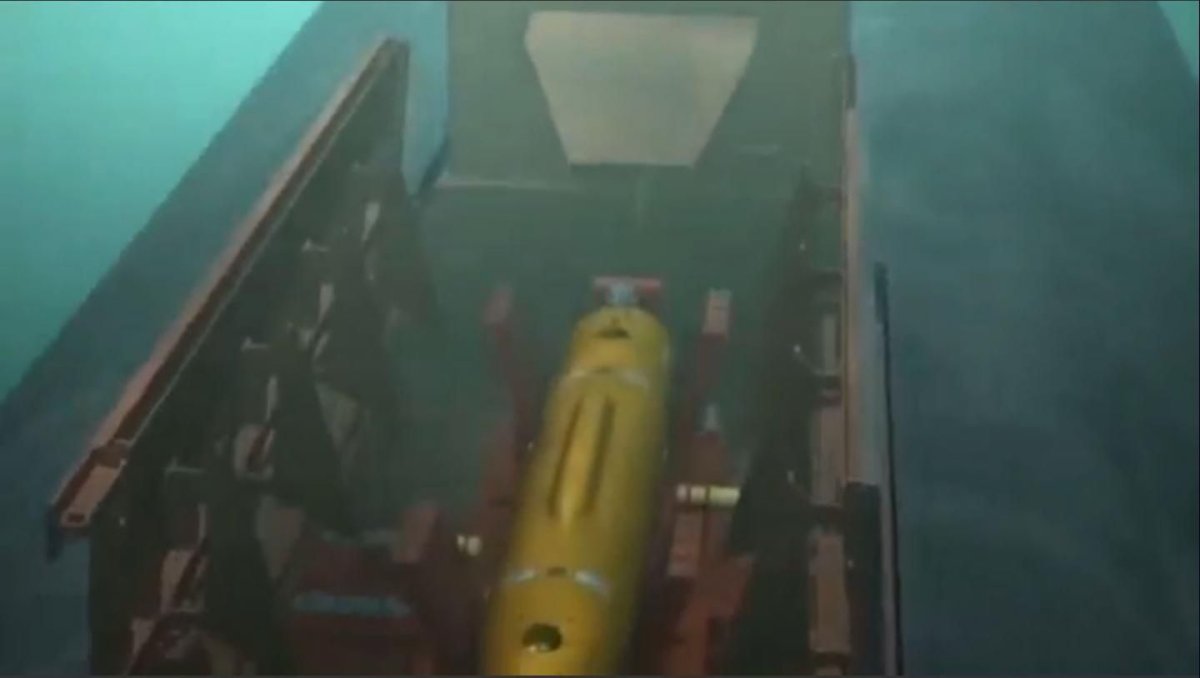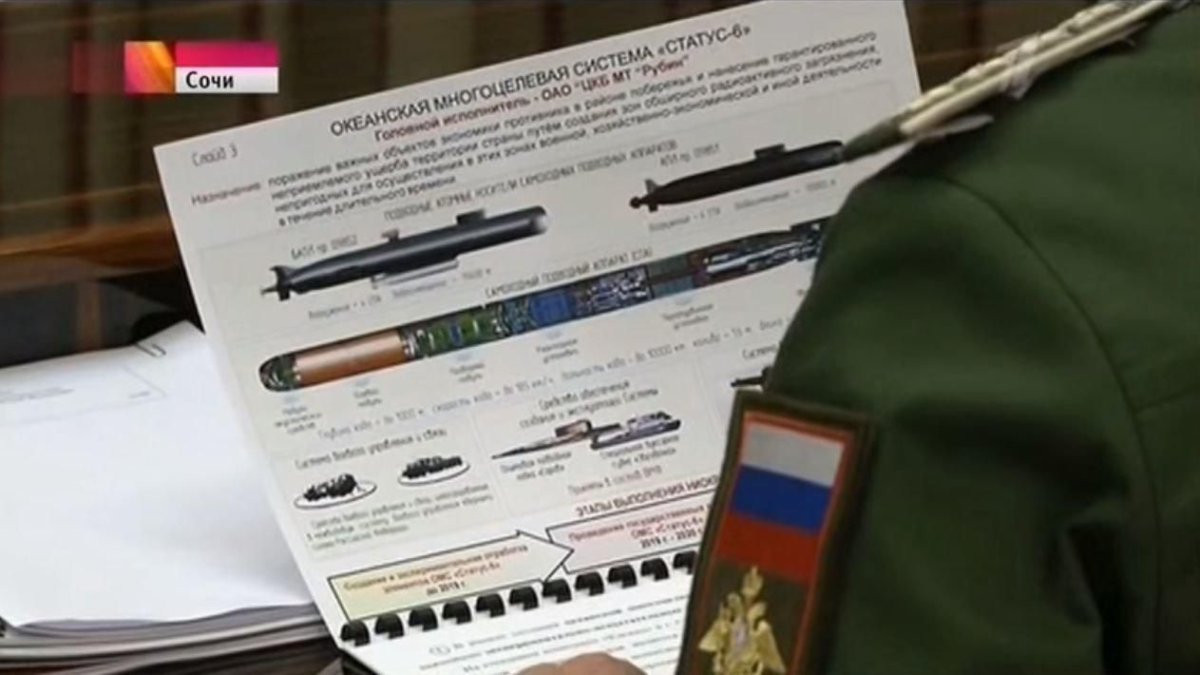One of Russia's latest and most advanced weapons, a torpedo-bearing underwater drone, may be capable of unleashing nuclear destruction in a new, devastating way, according to some experts cited this week.
As part of Moscow's ambitious campaign to upgrade its conventional arsenal, it has developed a submersible device that's been marketed as stronger, faster and more innovative than any previous weapon of its kind. So much so, that—if launched—the resulting shockwave could rival or even exceed the 2011 Japanese earthquake that produced a tsunami powerful enough to kill 15,000 people and cause the Fukushima nuclear power plant to undergo a triple meltdown, one of the worst nuclear disasters of all time
"A well-placed nuclear weapon of yield in the range 20 MT [megatons] to 50 MT near a seacoast could certainly couple enough energy to equal the 2011 tsunami, and perhaps much more," nuclear weapons physicist Rex Richardson told Business Insider on Tuesday. "Taking advantage of the rising-sea-floor amplification effect, tsunami waves reaching 100 meters [nearly 330 feet] in height are possible."
Greg Spriggs, a nuclear physicist at California's Lawrence Livermore National Laboratory, said the notion of nuclear explosion-induced tsunamis is "completely stupid." After further evidence of the "doomsday" weapon was revealed in the Pentagon's Nuclear Posture Review in February and Russian President Vladimir Putin's own state of the union address at the Russian parliament on March 1, the news outlet published its follow-up article Tuesday in which Spriggs reiterated his description of the weapon as "stupid" and a "waste." However, he said it "could possibly induce a tsunami."

Last month, Putin officially revealed the existence of an unmanned submersible military vehicle. The Russian leader said that in December his scientists had successfully completed testing of "an innovative nuclear power unit" 100 times smaller than existing submarine reactors, yet more powerful and capable of reaching maximum capacity 200 times faster.
He said the drone could move at "extreme depths, intercontinentally, at a speed multiple times higher than the speed of submarines, cutting-edge torpedoes and all kinds of surface vessels, including some of the fastest." Putin added that the submersible devices "are quiet, highly maneuverable and have hardly any vulnerabilities for the enemy to exploit. There is simply nothing in the world capable of withstanding them."
Putin then confirmed what many experts and officials had long suspected—that the underwater drone, which was later named Poseidon following a contest, would be able to "carry either conventional or nuclear warheads, which enables them to engage various targets, including aircraft groups, coastal fortifications and infrastructure."

Plans for such a weapon were first reported by The Washington Free Beacon in September 2015. Citing Pentagon sources, the article said that Russia was building submarines armed with nuclear drones dubbed "city busters" with "tens" of megaton explosive power and capable of traveling long distances at high speeds. The Pentagon nicknamed the project Kanyon.
Two months later, in November 2015, Russia state-run media outlet NTV aired blueprints of a nuclear-capable underwater drone, titled "Status-6 Oceanic Multipurpose System," apparently by accident during coverage of Putin's visit to defense officials in Sochi. Presidential spokesman Dmitry Peskov later admitted the error but did not elaborate on the details of the project itself.
"It's true, some classified information was captured on camera and subsequently deleted. We hope that this won't happen again," Peskov told Russia's Interfax news agency at the time. "We will take preventative measures to ensure this does not happen again."
Last year, defense commentator and retired Russian colonel Victor Baranetz claimed in a piece for Russian tabloid Komsomolskaya Pravda that Moscow had a plan to detonate nuclear bombs planted under U.S. coastlines in revenge for Washington's global missile shield. While the author made no mention of radioactive tsunamis, a number of British outlets ran with it, some of which have since deleted their story, according to Business Insider, which cited Newsweek 's coverage of Baranetz's claims. The Kremlin later denied the plot.
Uncommon Knowledge
Newsweek is committed to challenging conventional wisdom and finding connections in the search for common ground.
Newsweek is committed to challenging conventional wisdom and finding connections in the search for common ground.
About the writer
Based in his hometown of Staten Island, New York City, Tom O'Connor is an award-winning Senior Writer of Foreign Policy ... Read more
To read how Newsweek uses AI as a newsroom tool, Click here.








